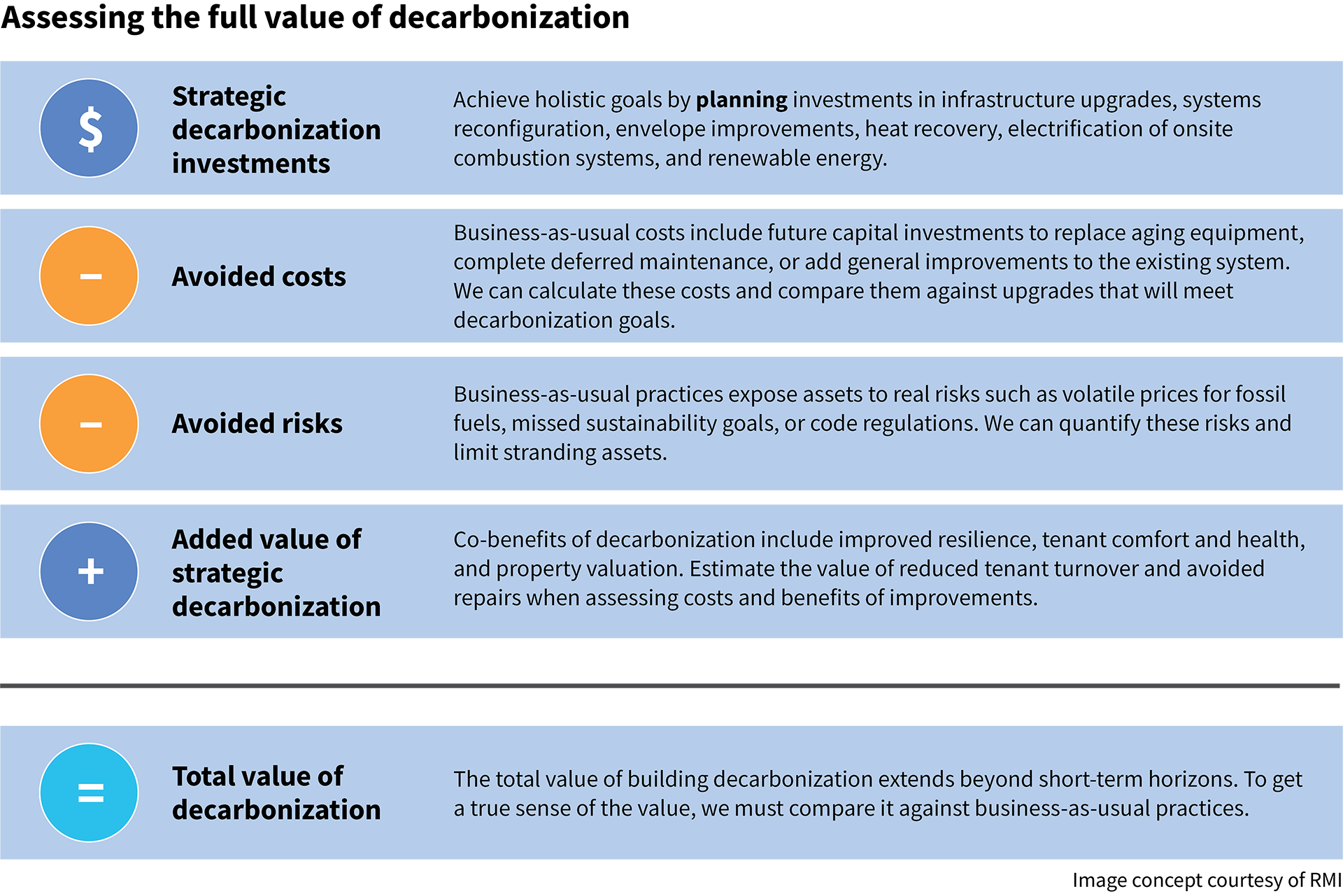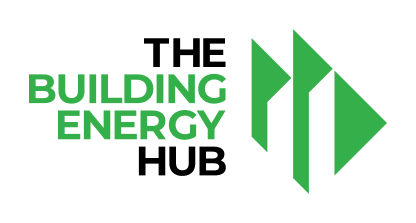Decarbonization Planning Guide
Understanding Building Decarbonization
What is the Value of Decarbonization Planning?
Planning for decarbonization now will pay off later.
Implementing new measures can not only help you reduce operational costs, enhance the usability of your buildings’ space, and attract and retain tenants, but it can also help you reduce the costs of decarbonization investments in the long run.
A decarbonization plan will help you minimize any added costs for decarbonizing your building as you address deferred maintenance, strategically upgrade systems, and work to define and achieve your goals. The decarbonization plan will enhance the value of your investments while cost-effectively reducing the emissions that they generate.
This initial preparation can help future decision making and limit stranded assets by identifying funding streams and taking the necessary steps to maximize the impact of future decarbonization upgrades.
As time goes by, equipment will reach the end of its useful life. Instead of limiting yourself to a like-for-like replacement at the time of failure, you’ll have a wider range of options if you plan ahead before the need arises. This includes key steps such as upgrading electrical infrastructure or shoring up structural supports in areas where new equipment may be needed in the future.
When you’re considering cost premiums for decarbonization, rather than evaluating the full cost of an improvement, you should compare these expenses to the business-as-usual costs that you would already incur in the course of maintaining your building—including replacing aging equipment.
There are several other important factors to consider when assigning financial value to the savings offered by decarbonization, even if they don’t seem straightforward at first.
Decarbonization has several potential value streams that don’t seem obvious at first, including general improvements to operations, reduced utility costs, improved resiliency, and enhanced indoor environmental quality.

The incremental cost between a business-as-usual equipment replacement and a low-carbon alternative can become more manageable if you have a financial plan in place. More discussion on financial planning and establishing a business-as-usual case can be found in the Establishing Business-as-Usual Case and Capital Planning sections.


